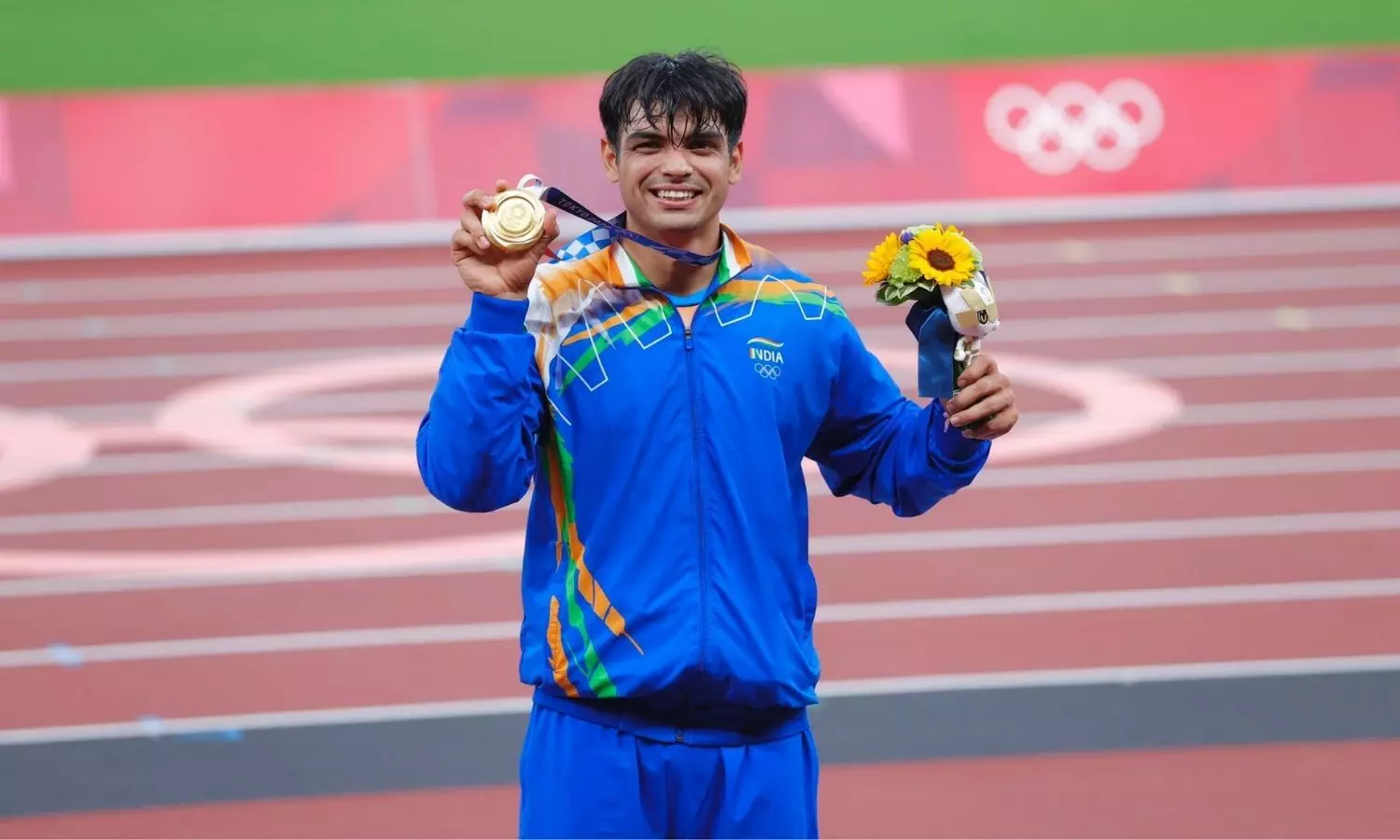GP- Article
The Neeraj Chopra effect: How one gold changed Indian athletics forever
From obscurity to Olympic glory, Neeraj Chopra’s golden throw sparked a nationwide shift — fueling dreams, inspiring youth, and transforming Indian athletics.

Neeraj Chopra (Photo credit: Tokyo Olympics)
When Neeraj Chopra hurled the javelin 87.58 meters at the Tokyo Olympics on August 7, 2021, he not only clinched India's first-ever Olympic gold in athletics, but also ignited a revolution that reshaped the landscape of Indian sports. His historic achievement was more than just a personal triumph. It was a national moment of reckoning. A country long starved for Olympic glory in track and field had finally found its golden boy. In that moment, Chopra transformed from an athlete into a symbol of hope, possibility, and resurgence.
A gold beyond metal
Neeraj's gold medal was historic for several reasons. It marked India's first-ever Olympic gold in athletics and the first Olympic medal in the sport since Norman Pritchard's two silvers at the 1900 Paris Games—over 120 years ago. For a country with a rich sporting culture but long-standing gaps in athletic infrastructure and institutional support, this was nothing short of a sporting renaissance. The last time an Indian had come agonizingly close was Milkha Singh in 1960 and PT Usha in 1984 — both narrowly missing out on the podium.
But Neeraj’s victory wasn't just about numbers or records. It was a psychological breakthrough. For decades, Indian athletes had labored under the weight of low expectations and systemic neglect. His win shattered the mental barrier that told young athletes they could be good — but not the best. It proved that with talent, discipline, and the right ecosystem, Indian athletes could stand shoulder to shoulder with the world's finest.
Chopra’s win transcended sport and became national inspiration. World Athletics president Sebastian Coe praised the "powerful influence" Chopra had in elevating athletics globally—even comparing his rise to the Usain Bolt era. For athletes like Murali Sreeshankar and Avinash Sable, the Olympics marked a turning point—validation that Indians belonged in the world’s elite competitions. Suddenly, Indian track and field wasn’t a long-shot—it was a new powerhouse with belief, ambition, and momentum.
Inspiring a generation
Within weeks of Chopra's Olympic triumph, athletics saw a massive uptick in interest at the grassroots level. Enrollments in javelin academies across the country surged. Youngsters from rural Haryana to the Northeast began to dream differently. Social media was flooded with videos of boys and girls throwing sticks across fields, emulating their idol.
Chopra's win showed that you didn’t need to come from privilege to succeed on the global stage. Born in Khandra, a small village in Haryana, and trained at modest facilities in the early stages, his journey resonated with millions. He became a relatable hero, especially for youth in India’s hinterlands.
To explore more opportunities in various other sports click here.
Infrastructure and investment boost
The government and sports authorities took note. The Target Olympic Podium Scheme (TOPS) was expanded. Funding for athletics camps increased. Private sponsors and state governments began to invest more in field events. The Athletics Federation of India (AFI) reported a 200% increase in the number of junior athletes entering national-level camps between 2021 and 2024.
New javelin runways, synthetic tracks, and sports science centers have been built in multiple states. Haryana, Punjab, and Odisha have led the charge in nurturing young talent. States like Haryana have expanded their investment in sports science and athlete support systems, reflecting the momentum generated by Neeraj Chopra’s Olympic success.
A ripple effect across disciplines
While javelin throw understandably saw the greatest surge, Chopra’s influence extended to other disciplines as well. Long jumpers, sprinters, and shot putters began to attract greater visibility and support. The media, previously obsessed with cricket, began dedicating prime-time slots and headlines to track and field events.
More importantly, Chopra brought attention to the role of coaching, sports science, and mental health. He often credited his foreign coaches, biomechanical analysis, and dietary regimen for his performance — triggering a paradigm shift in how Indian athletes prepared for global competitions. Performance psychology and injury management became mainstream discussions in Indian athletics.
Global recognition and cultural shift
Neeraj Chopra didn’t stop at Tokyo. His consistent performances — including the gold at the World Athletics Championships 2023 and podium finishes in the Diamond League — have cemented his status as one of the best in the world. He became the first Indian track and field athlete to be featured on global magazine covers, in international endorsements, and in athletics think-tanks.
His humility, discipline, and clean image made him a cultural icon. He made speaking Hindi on global stages cool, refused to endorse harmful products, and was honoured with the Youth Icon Award (Sports) by FICCI in 2024 for inspiring millions and transforming India’s sporting outlook.
In April 2025, Chopra announced the Neeraj Chopra Classic, a World Athletics Gold javelin meet set to take place on July 5 in Bengaluru. This marks a forward leap toward hosting a Diamond League event in India—boosting local talent and showcasing world-class competition on home soil. Featuring champions like Anderson Peters and Julius Yego, the Classic is both a tribute and a blueprint for India’s athletic destiny
The legacy is just beginning
As India prepares for future Olympics and world championships, the Chopra Effect continues to reverberate. More than medals, he has inspired belief. Athletics is no longer seen as a poor cousin to cricket. School curriculums are adding structured athletics programs, and corporate CSR budgets are increasingly flowing toward track and field.
India’s under-18 and under-20 athletics teams have already begun making waves in Asian and global competitions. Talents like Shaili Singh (long jump), Pooja Singh (high jump), and Deepanshu Sharma (javelin) are part of this new wave — mentored, funded, and most importantly, believed in.
One throw, infinite impact
Neeraj Chopra’s golden throw was not just a mark in the sandpit of Tokyo, but a launching point for India’s athletic dreams. It broke barriers, opened minds, and changed the trajectory of a nation’s sporting ambition. Today, when a young Indian picks up a javelin or lines up at the starting blocks, they do so knowing that greatness is not just a dream — it’s a real, attainable goal.
And for that, India will always owe Neeraj Chopra not just applause, but gratitude.

